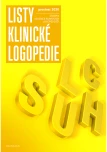VISUAL REINFORCEMENT AUDIOMETRY USED IN PRACTICE – CASE REPORTS
Authors:
Mgr. Kaniová Marie; Ph.D. 1,2; Mgr. Mgr. Bc. Švédíková Veronika 1; Mgr. Tomasová Anna 1
Authors‘ workplace:
Klinika otorinolaryngologie a chirurgie hlavy a krku, Fakultní nemocnice Ostrava, přednosta prof. MUDr. Pavel Komínek, Ph. D., MBA
1; Lékařská fakulta, Ostravská univerzita, Ostrava
2
Published in:
Listy klinické logopedie 2020; 4(2): 74-76
Category:
Main topic
Overview
Visual Reinforcement Audiometry (hereinafter referred to as “VRA”) is one of the behavioural methods of hearing examination. The case studies aim to provide information on the importance of the aforementioned test and are focused on patients on whom VRA tests are most often performed. The results of the VRA test are beneficial, both in cases of a discrepancy between the results of objective hearing measurements (evoked potentials test, test for the presence of evoked otoacoustic emissions) and the statements by the child’s parents, as well as in determining the hearing threshold curve with a hearing aid.
Keywords:
Visual Reinforcement Audiometry – hearing assessment methods – children – disability
Sources
- British Society of Audiology: Recommended Procedure – Visual Reinforcement Audiometry. [online]. 2014. [cit. 3. 9. 2020]. Dostupné z: http://www.thebsa.org.uk/wp-content/uploads/2014/04/BSA_VRA_24June2014_Final.pdf
- GEFLAND, S. A., 2016. Essentials of audiology. New York: Thieme, s. 329-347. ISBN 978-1-60406-861-0.
- KABÁTOVÁ, Z.: Audiologický screening, 2012. In: KABÁTOVÁ, Z., PROFANT, M. a kol.: Audiológia. Praha: Grada, s. 177-183. ISBN 978-80-247-4173-4.
- LAVIČKA, L., ŠLAPÁK, I., 2002. Porucha sluchu v dětském věku – poznámky pro pediatra. Pediatrie pro praxi. [online]. 6, s. 275-278. [cit. 3. 9. 2020]. Dostupné z: https://www.pediatriepropraxi.cz/pdfs/ped/2002/06/04.pdf
- MADELL, J. R., 2008. Using visual reinforcement audiometry to evaluate hearing in infants from 5 to 36 months. In: MADELL, J. R., FLEXER, C., et.al. Pediatric audiology. New York: Thieme, s. 65-75. ISBN: 978-1626234017.
- MEJZLÍK, J., DRŠATA, J., HLOUŠKOVÁ, M., 2015. Tónová audiometrie. In: DRŠATA, J., HAVLÍK, R., CHROBOK. V.: ed. Foniatrie – sluch. Havlíčkův Brod: Tobiáš, s. 72-86. ISBN 978-80-7311-159-5.
- ŠKODOVÁ, E., 2003. Opožděný vývoj řeči. In: Škodová, E., Jedlička, I.: Klinická logopedie. Praha: Portál, s. 91-105. ISBN 80-7178-546-6.
- VELDOVÁ, Z., 2018. Foniatrie. In: HAHN, A. a kol.: Otorinolaryngologie a foniatrie v současné praxi. 2. doplněné a aktualizované vydání. Praha: Grada, s. 361-408. ISBN 978-80-271-0572-4.
- VOJNOVÁ, M., LEJSKA. M., SMISITELOVÁ, J., 2016. Klinické využití nové audiometrické metody – vizuálně podporovaná audiometrie. Otoralyngologie a foniatrie. [online]. 65(1), s. 48-52. [cit. 5. 9. 2020]. Dostupné z: https://www.prolekare.cz/casopisy/otorinolaryngologie-foniatrie/2016-1/klinicke-vyuziti-nove-audiometricke-metody-vizualne-podporovana-audiometrie-58048
Labels
Clinical speech therapy General practitioner for children and adolescentsArticle was published in
Clinical speech therapy (Listy klinické logopedie)

2020 Issue 2
Most read in this issue
- CASE STUDY OF BOY WITH SUBMUCOSAL CLEFT PALATE, DEVELOPMENTAL DYSPHASIA AND EATING DISORDER
- PHONEME AWARENESS, READING AND EARLY INTERVENTION IN CHILDREN WITH HEARING IMPAIRMENTS
- DIAGNOSTICS OF NARRATIVE ABILITIES AND CZECH ADAPTATION OF THE MAIN TOOL
- HEARING EXAMINATION WITH METHODS OF EVOKED POTENTIALS AND ITS LIMITATIONS IN THE YOUNGEST CHILDREN
